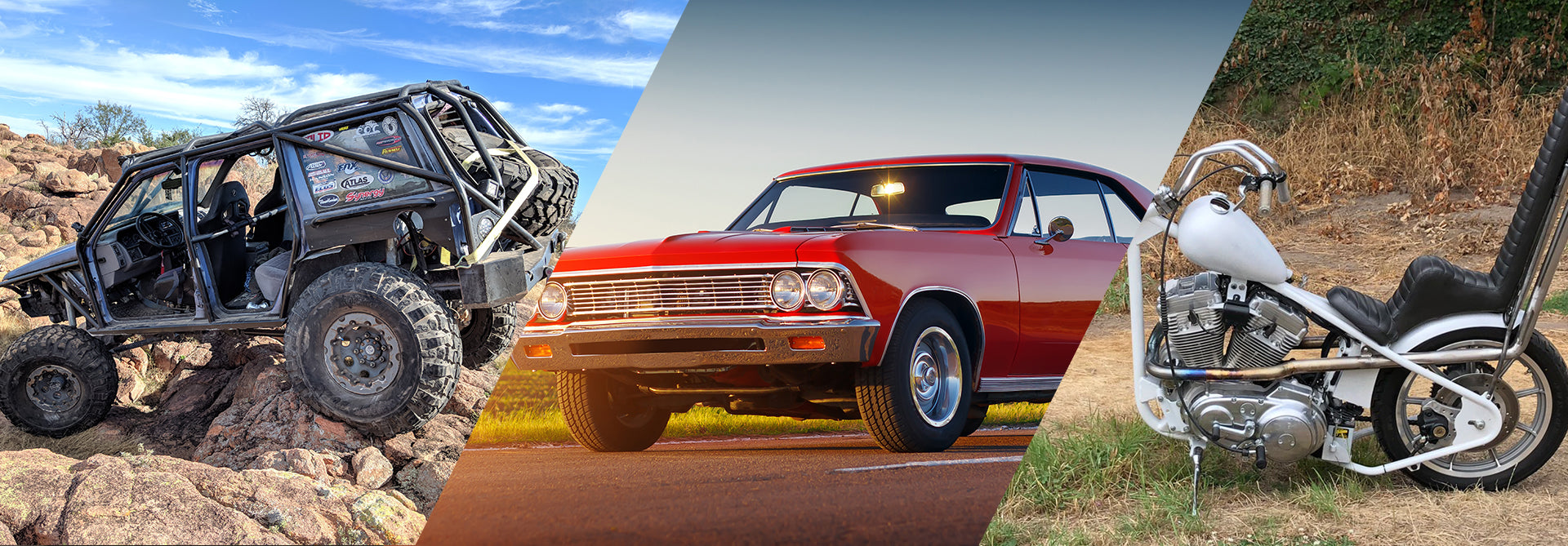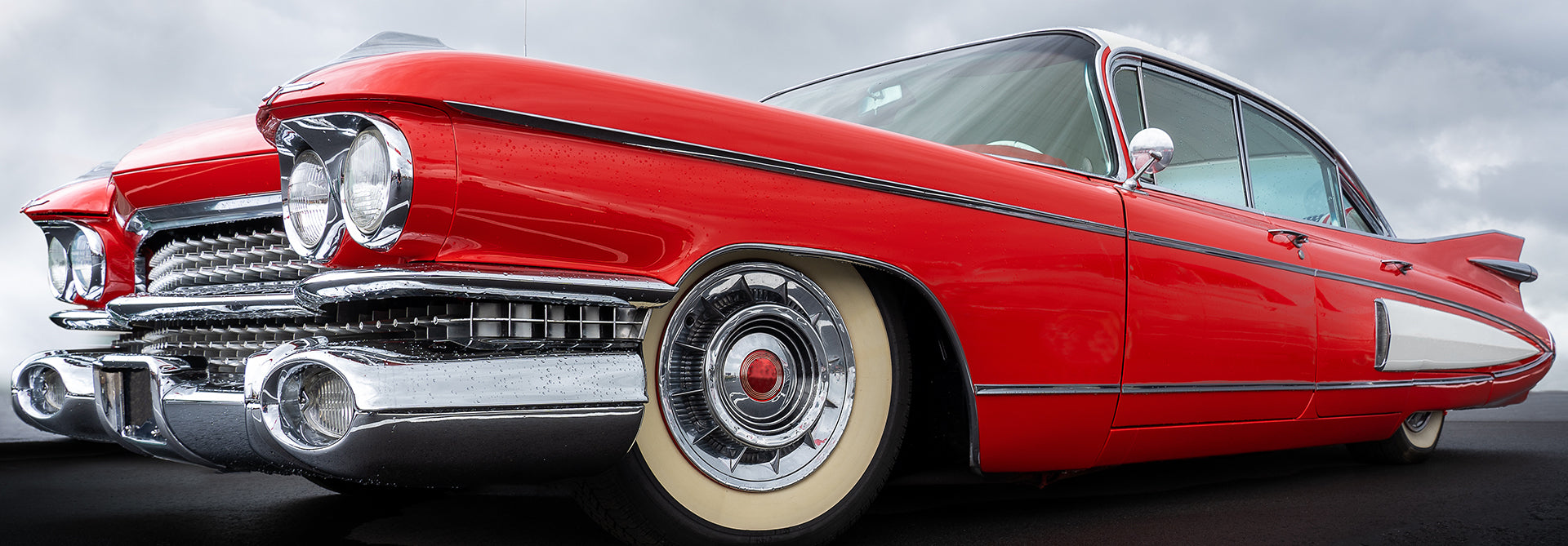Whether you’re looking to take on a restoration or repair project, rust is always one of the most frustrating parts of the process. For all the amazing properties that metal has, rust is its kryptonite that can turn your vehicle into a pile of junk.
In this article, we’ll take you through the best ways of handling rust quickly and easily, showing you how to completely fix the problem once and for all.
The Root of All Evil
Metal can stop a bullet and bulldoze through a mountain, but expose it to water over time and it’ll disintegrate away like paper. The first step when repairing any rust problems is identifying why it rusted in the first place.
For instance, let’s say your floor panel is rusted out. If the bottom of the car has been exposed to a lot of moisture (such as being abandoned in someone’s yard), that might have caused the rust. Another common cause is weather stripping around the doors and windows. These grow old and worn out over time, allowing water to slip through and puddle up on the
floor. You’ll want to figure out where the moisture is coming from so you can prevent the issue from happening again after you make the repair.

As mentioned, weather stripping tends to be a big culprit. As time goes on, the strip becomes rigid and cracked, no longer giving a waterproof seal. Once you remove any damaged or old weather stripping, make sure you check for hidden rust that might need to be repaired before new strips are added back onto the vehicle.
Know Your Enemy
Once you’ve identified the source of the problem, it’s time to de-rust your vehicle. The first thing you’ll need to determine is where you have surface rust that can simply be sanded away, and where you have structural rust. If the rust has penetrated too far into the metal, part of the panel is compromised and needs to be removed and replaced or plugged.

How you remove the rust completely depends on the tools you have available. A lot of welders will use a grinder with various different types of wheels to sand down the metal surface until they see shine (or a hole, if the rust has gone all the way through). Other welders have access to blasting equipment, where sand or various other types of mediums can be used to quickly and efficiently clean the vehicle’s entire chassis.
Drill and Plug
Depending on how the moisture affected your vehicle, you might see a lot of tiny holes once you remove all the rust. These perforations can often be fixed with a method of drilling and plugging, rather than having to replace the entire panel.
To know if a hole can be plugged, first examine the size of the hole. If it’s too large, you’ll want to replace it with a patch instead. You’ll also want to examine the material around the hole. For a plug to work, the metal around the hole has to be in good enough condition to support the weld.
Once you’ve identified that the hole is fit for a plug, the next step is to drill or punch it out. Many experts will recommend using a stepper bit to drill the hole so that all the rust is removed from the inside. After that, you’ll want to deburr the surfaces around the hole.

Now it’s time to fill the hole with a weld: First, take some copper backing and mount it behind your hole with clamps or magnets. This provides a surface where you can plug the hole with a weld. The weld shouldn’t stick to the copper, allowing the backing to be easily removed once the weld cools.
Patches
Often you’ll find rusted areas too large and compromised to fill in with a simple plug weld. These areas need to be completely replaced. First, you’ll want to mark out the area that needs to be removed, making sure you’re not leaving any rusted material.
A plasma cutter is generally the best way to remove the damaged material. This is because plasma cutters are incredibly precise, allowing you to cut some of the most intricate shapes in one go. However, plasma cutters are by no means the only answer. You can use a cutting wheel, a nibbler or anything else designed to cut sheet metal. However, if you can cut out your bad material all in one piece, you can actually use it as a stencil for your replacement patch. If not, you’ll need to sketch your patch by placing your new metal sheet under the hole and tracing the edges.
When you cut out your new patch, make sure to give the edges a little bit of a buffer. You can always trim your edges down later. Some welders prefer to do a lap weld, where the patch sits on top of the hole rather than flush with the edges. The problem is that this leaves a small overhang between the patch and the vehicle where more moisture could potentially collect. Most experts recommend a butt weld, where the edges of the hole and the patch are flush with one another.

Once you have the right size of patch, it’s time to weld it like you would with any panel repair—making sure you properly manage your heat. If you’re not sure how to do that, check out our in-depth article here.
As a final step, make sure you seal any exposed steel with some type of rust resistant coating such as paint. By following these steps, not only will you repair any rusted spots, you’ll also take the necessary precautions to avoid it happening again.
The Right Machine
Both MIG and TIG machines are great for rust repair. However, with the thin material, having a stable and reliable arc is key. Often, cheap or old machines will display inaccurate information or fluctuate how much power they give your arc as you weld. This can make thin sheet metal welds impossible.
If you believe your welding machine isn’t up for the job, maybe it’s time to look at a new one from Weld My Ride. We’re the only online welding store dedicated to automobile welders. We’ve got the best prices and friendly, knowledgeable service experts who are dedicated to making this the #1 spot on the internet for welders like you.







